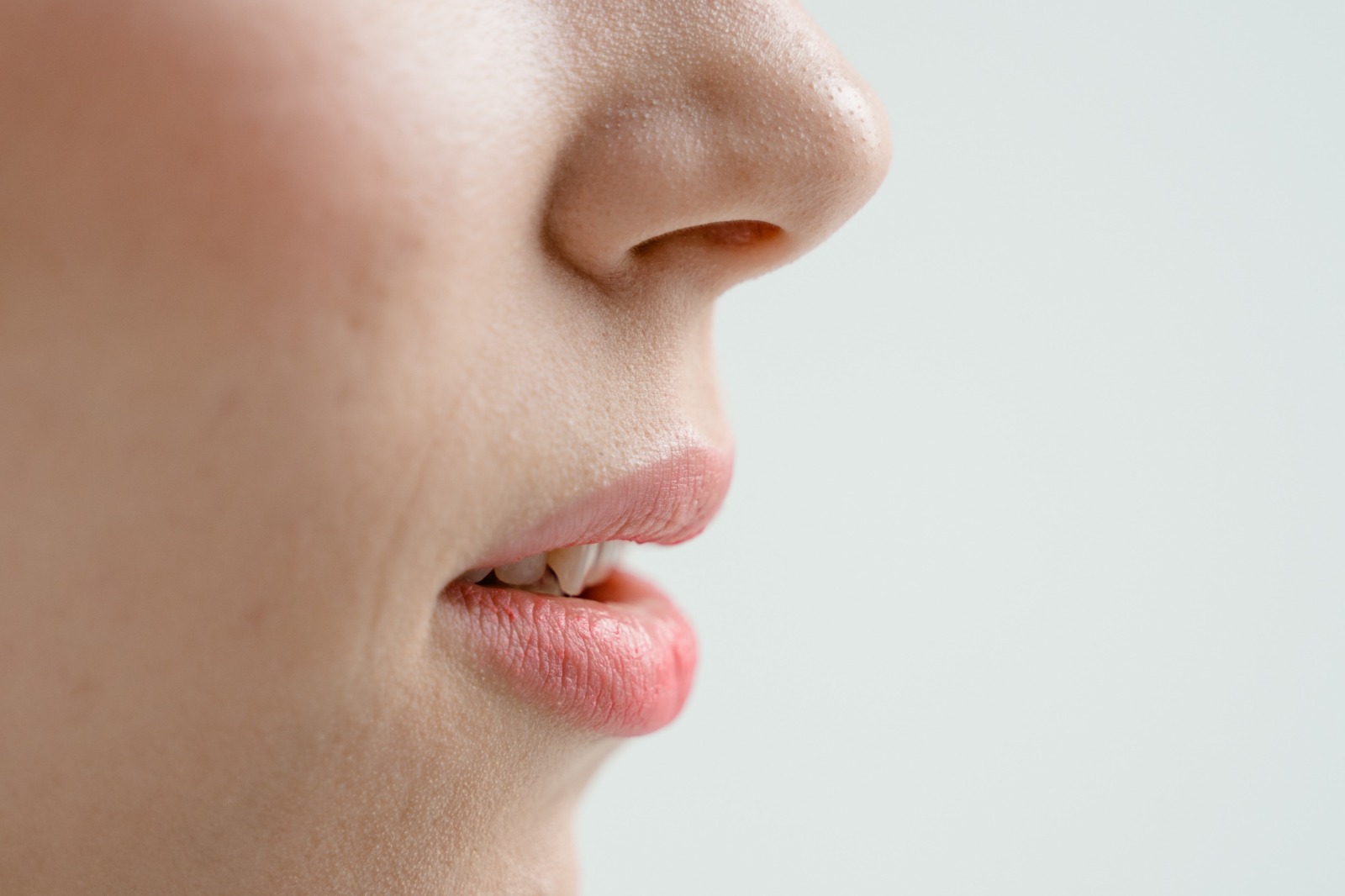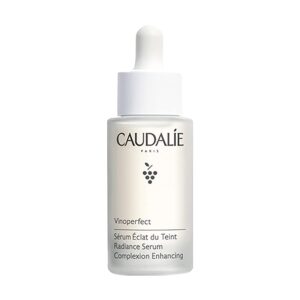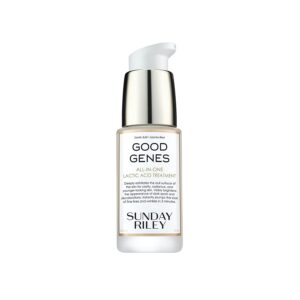Skincare
Understanding Skin Lesions: Types, Identification, and Underlying Causes
Skin lesions may seem concerning, and rightly so. They often serve as visual indicators of underlying skin conditions that may need medical attention. This post will delve into skin lesions, their types, how to identify them, and the diseases that cause them. Let’s explore!
What is a Skin Lesion?
Skin lesions, simply put, are abnormal growths or patches that appear on the skin. They can be primary, secondary, or vascular lesions, varying in color, size, shape, and texture. Despite their alarming appearance, it’s crucial to note that not all skin lesions signify serious health conditions. However, understanding them can help you take timely action when necessary.
Exploring the Three Main Types of Skin Lesions
Skin lesions come in various forms and can be classified into three main types:
Primary Skin Lesions
These are the initial reaction to a triggering factor such as an infection, allergic reaction, or physical trauma. Examples include moles, rashes, and pimples.
Secondary Skin Lesions
Secondary skin lesions evolve from primary ones due to external factors like scratching, infection, or the natural healing process. These include scales, scars, and crusts.
Vascular Skin Lesions
These are related to the blood vessels and include bruises, petechiae, and spider veins.
Visual Characteristics of Skin Lesions
Identifying skin lesions involves a keen eye for detail, noting their color, size, shape, and texture.
Primary skin lesions may appear as elevated bumps (like pimples), flat spots (like rashes), or pigmented areas (like moles). Secondary skin lesions can take on different forms like crusts (hard coverings formed over a healing wound), scales (flakes or peels on the skin), or scars. Vascular skin lesions may appear as red, purple, or bluish discolorations, often varying in size and shape.
To aid in the accurate examination of skin lesions, we recommend the Dermlite DL200 Hybrid Dermatoscope, a professional-grade tool that can help you get a clearer view.

Diseases That Cause Skin Lesions
Several diseases and conditions can cause skin lesions, ranging from skin-specific ailments like dermatitis, psoriasis, and acne, to systemic diseases like chickenpox, measles, or lupus. Infections like ringworm and impetigo can also lead to skin lesions.
To soothe skin irritated by these conditions, Eucerin Advanced Repair Cream can offer relief. Remember, always consult with a healthcare professional before starting any new skincare product.

When to Seek Medical Attention for Skin Lesions
While some skin lesions are benign and harmless, others may be indicative of a more serious underlying condition. It’s important to seek medical attention if your skin lesions change in size, shape, or color, become painful or itchy, or persist despite home care.
A dermatologist plays a crucial role in the diagnosis and treatment of skin lesions. They can help identify whether a lesion is a sign of skin cancer, a skin disease, or a symptom of a systemic disease.
Protection against sun damage, a significant contributor to some skin lesions, is vital. The Neutrogena Ultra Sheer Dry-Touch Sunscreen provides broad-spectrum coverage, making it an excellent addition to your skincare routine.

Conclusion: Understanding and Addressing Skin Lesions
Understanding skin lesions is the first step toward maintaining healthy skin. Recognizing their types, knowing what they look like, and being aware of the diseases causing them equips us with the knowledge to take prompt and appropriate action.
For daily skincare maintenance and prevention, the CeraVe Moisturizing Cream can be a great choice. It helps retain moisture and fortify the skin’s natural barrier, thereby preventing certain types of skin lesions.

In all cases, consult with a healthcare professional if you have any concerns about skin lesions. With the right knowledge and awareness, you can handle skin lesions more confidently and effectively.
Skincare
Secrets to Minimizing Nose Pores: Unlock Your Flawless Skin
Say hello to your best skin yet! Follow these secrets to minimize nose pores and unlock your inner glow.✨ #skinsecrets #nosepores #flawlessbeauty

Everyone desires smooth, flawless skin, but enlarged pores on the nose can sometimes get in the way of achieving that goal. Pores are a natural part of our skin’s structure, but certain factors can cause them to appear more prominent. If you’ve been struggling with enlarged pores and are wondering how to minimize them effectively, you’ve come to the right place!
In this comprehensive guide, we will delve into the world of pore care, helping you understand the function of pores and the factors that contribute to their size. We will explore various techniques, natural remedies, and top treatments to reduce the appearance of pores on your nose. By the end of this blog, you’ll be equipped with expert tips and strategies to reveal a smoother, more radiant complexion. Let’s embark on this journey to unlock your skin’s true potential and transform your look!
Understanding Pores and Their Function
What are pores and their purpose?
Pores are tiny openings on the surface of our skin that serve as the gateway for the release of sweat and sebum (oil). They are an essential part of our skin’s natural defense system, as they help to regulate temperature and maintain the skin’s hydration and suppleness. Pores also contain hair follicles and are connected to sebaceous glands, which produce sebum. This natural oil helps to protect and nourish the skin, but when produced in excess, it can contribute to the appearance of enlarged pores.
Causes of enlarged pores on the nose
Several factors can contribute to enlarged pores on the nose, and understanding these factors is the first step in addressing the issue. Some common causes include:
- Genetics: Your pore size is largely determined by genetics. If your parents have larger pores, it’s likely that you may inherit this trait as well.
- Excess oil production: Oily skin types tend to have larger pores due to the overproduction of sebum. This excess oil can mix with dead skin cells, leading to clogged pores and a more prominent appearance.
- Aging: As we age, our skin loses its elasticity, causing pores to appear larger. Additionally, the production of collagen decreases, which can lead to the skin sagging around the pores, making them look more prominent.
- Sun damage: Exposure to the sun’s harmful rays can cause collagen breakdown, leading to larger-looking pores over time.
- Improper skin care: Neglecting a proper skincare routine or using harsh, abrasive products can irritate the skin, exacerbate oil production, and lead to enlarged pores.
Now that you have a better understanding of pores and the factors that contribute to their size, let’s explore the various ways to minimize their appearance and achieve a smoother complexion.
How to Get Rid of Pores Under the Nose
Proper cleansing techniques
Keeping your skin clean and free from excess oil and debris is the first step in reducing the appearance of pores under your nose. Use a gentle, pH-balanced cleanser that is suitable for your skin type. Make sure to cleanse your face twice a day – in the morning and at night – to remove oil, dirt, and makeup that may clog your pores.
Exfoliation to remove dead skin cells
Exfoliating your skin regularly can help unclog pores, making them appear smaller. Incorporate a gentle exfoliant into your skincare routine 1-2 times per week. Choose a product with alpha-hydroxy acids (AHAs), beta-hydroxy acids (BHAs), or gentle physical exfoliants to slough away dead skin cells and reveal a smoother complexion.
Use of pore-minimizing products
There are several skincare products specifically designed to minimize the appearance of pores. Look for ingredients such as salicylic acid, niacinamide, and retinol, which can help unclog and refine your pores. Additionally, a clay or charcoal mask used once a week can help draw out impurities and reduce the appearance of pores on your nose.
Importance of a consistent skincare routine
A consistent skincare routine is crucial for maintaining healthy, smooth skin and reducing the appearance of pores. Make sure to cleanse, tone, and moisturize your skin daily, and don’t forget to apply sunscreen to protect your skin from sun damage. By following a dedicated skincare regimen, you can effectively manage oil production, prevent clogged pores, and achieve a more refined complexion.
Can You Shrink Pores on Your Nose?
Clarifying the myth of shrinking pores
It is important to understand that you cannot physically change the size of your pores, as pore size is genetically determined. However, you can minimize their appearance and prevent them from becoming more noticeable. The term “shrinking pores” is often used to describe the process of reducing their visibility, but it’s crucial to have realistic expectations when it comes to pore size reduction.
Realistic expectations for pore size reduction
While you can’t permanently shrink your pores, you can certainly take steps to make them appear smaller and less visible. By adopting a consistent skincare routine, using the right products, and following preventative measures, you can achieve a smoother complexion and make your pores appear less prominent.
Strategies for minimizing the appearance of pores
There are several strategies you can employ to reduce the visibility of pores on your nose. These include:
- Keeping your skin clean and free from excess oil and debris through proper cleansing and exfoliation.
- Using pore-minimizing products with ingredients like salicylic acid, niacinamide, and retinol.
- Opting for non-comedogenic makeup and skincare products to prevent clogged pores.
- Protecting your skin from sun damage with broad-spectrum sunscreen.
Seeking professional treatments, such as chemical peels, microdermabrasion, or laser therapy, for more advanced pore-minimizing solutions.
How to Close Nose Pores Naturally
Home remedies for pore reduction
If you prefer natural remedies for skincare, there are several options you can try to minimize the appearance of your nose pores. These home remedies are easy to incorporate into your routine and can offer additional skin benefits:
- Ice cubes: Rubbing an ice cube on your nose for a few minutes can help tighten the skin and temporarily reduce the appearance of pores. Make sure to wrap the ice cube in a clean cloth to avoid direct contact with your skin.
- Apple cider vinegar: Dilute apple cider vinegar with an equal amount of water and apply it to your nose with a cotton pad. The astringent properties of apple cider vinegar can help tighten your skin and minimize the look of pores.
- Aloe vera: Apply pure aloe vera gel to your nose and let it sit for about 10 minutes before rinsing it off. Aloe vera has soothing and hydrating properties that can improve your skin’s overall appearance.
- Honey and lemon mask: Mix equal parts of honey and freshly squeezed lemon juice, then apply the mixture to your nose. Leave it on for about 15 minutes before rinsing it with warm water. Honey has antibacterial properties, while lemon juice has astringent effects that can help tighten the skin and make pores less noticeable.
Tips for effective natural remedies
When using natural remedies, it’s important to be consistent and patient. Results may take time to appear, and individual responses may vary. Always perform a patch test before trying a new remedy to ensure that you don’t have an adverse reaction. If you experience any irritation or worsening of your skin condition, discontinue use and consult a dermatologist.
What Shrinks Your Pores: Top Treatments and Products
Over-the-counter pore-minimizing products
Incorporating effective skincare products into your daily routine can help minimize the appearance of pores. Look for the following ingredients, which are known for their pore-refining properties:
- Salicylic acid: This BHA can penetrate deep into the pores, unclogging them and reducing their appearance.
- Niacinamide: This form of vitamin B3 can help regulate oil production, improve skin elasticity, and reduce pore visibility.
- Retinol: This vitamin A derivative can increase cell turnover, unclog pores, and improve skin texture.
Professional treatments for pore reduction
If you’re looking for more advanced pore-minimizing solutions, consider seeking professional treatments from a dermatologist or licensed esthetician. Some popular options include:
- Chemical peels: These treatments use acids to remove the outer layer of skin, revealing a smoother, more even complexion.
- Microdermabrasion: This procedure involves using a machine to exfoliate the skin’s surface, promoting cell turnover and reducing the appearance of pores.
- Laser therapy: Non-ablative laser treatments can stimulate collagen production, tighten the skin, and minimize the look of pores.
Remember to consult with a skincare professional to determine the most suitable treatment for your skin type and concerns.
Preventive Measures to Maintain Smaller-Looking Pores
Importance of sun protection
Protecting your skin from the sun’s harmful rays is crucial for maintaining a smooth, refined complexion. Sun damage can lead to a breakdown of collagen, causing the skin to lose elasticity and making pores appear larger. Make sure to apply a broad-spectrum sunscreen with at least SPF 30 every day, even on cloudy days or when you’re indoors.
Controlling oil production
Excess oil production can contribute to clogged and enlarged pores. To keep oil production in check, use skincare products formulated for your skin type and avoid over-cleansing or using harsh products that can strip the skin of its natural oils. Consider using blotting papers throughout the day to remove excess oil without disturbing your makeup.
Staying hydrated
Proper hydration is essential for maintaining healthy, plump skin. Drink plenty of water throughout the day and incorporate hydrating products, such as hyaluronic acid or glycerin, into your skincare routine. Well-hydrated skin is less likely to produce excess oil and can help maintain a smoother complexion.
A healthy diet for better skin
Your diet plays a significant role in the health and appearance of your skin. Consuming a balanced diet rich in fruits, vegetables, whole grains, lean proteins, and healthy fats can improve your skin’s overall health and contribute to a more refined complexion. Foods high in antioxidants, such as berries, leafy greens, and nuts, can help protect your skin from environmental damage and promote a smoother appearance. Additionally, try to limit your intake of processed foods, refined sugars, and unhealthy fats, as they can contribute to inflammation and exacerbate skin issues, including enlarged pores.
Additional Tips for Successful Pore Care
A. Don’t squeeze or pick at your pores
Resist the urge to squeeze or pick at your pores, as this can lead to inflammation, infection, and even permanent scarring. If you’re struggling with blackheads or other pore-related issues, consult a professional for safe and effective extraction.
Adjust your skincare routine as needed
Your skin’s needs can change with the seasons, your environment, or even hormonal fluctuations. Be prepared to adjust your skincare routine accordingly to maintain the best possible skin health. Listen to your skin and make changes when necessary, whether that means using lighter products in the summer or incorporating more hydrating ingredients during winter months.
Regularly clean makeup brushes and applicators
Dirty makeup brushes and applicators can harbor bacteria and transfer it to your skin, leading to clogged pores and breakouts. Regularly clean your brushes and applicators using a gentle brush cleanser or mild soap to prevent bacteria buildup and maintain optimal skin health.
Consult a dermatologist or esthetician for personalized advice
If you’re unsure about the best approach to minimize the appearance of your pores or have tried various methods without success, consider consulting a dermatologist or esthetician for personalized advice. They can analyze your skin, recommend tailored solutions, and help you achieve a smoother, more refined complexion.
Conclusion
Recap of key points
In this comprehensive guide, we’ve covered various techniques, natural remedies, and top treatments to minimize the appearance of pores on your nose. By understanding the factors that contribute to enlarged pores and adopting a consistent skincare routine, you can achieve a smoother, more radiant complexion.
Achieving a smoother, more refined complexion with minimized pores may seem challenging, but with the right knowledge, techniques, and products, it is entirely possible. By understanding the factors that contribute to enlarged pores and adopting a consistent skincare routine tailored to your skin type, you can effectively reduce their visibility and improve your skin’s overall appearance.
The importance of persistence and patience in pore care
Remember that patience, persistence, and a commitment to healthy skincare habits are crucial for successfully minimizing the appearance of pores on your nose. Embrace your skin’s unique characteristics, and don’t forget to consult a professional if you need personalized advice or are considering advanced treatments.
It’s crucial to remember that pore size is largely determined by genetics, and it’s impossible to permanently shrink pores. However, with patience, persistence, and the right skincare regimen, you can effectively reduce their visibility and improve your skin’s overall appearance.
Encouragement to embrace one’s unique skin characteristics
Finally, always remember that everyone’s skin is unique, and what works for someone else might not necessarily work for you. Embrace your skin’s natural characteristics and focus on achieving a healthy, glowing complexion. Consistently care for your skin, and don’t forget that sometimes, the most significant improvements come from the smallest changes.
Skincare
How to Remove Dark Spots Caused by Pimples
Struggling with dark spots from acne? Check out our latest article for tips and tricks on how to remove them!#acne #skincare #hyperpigmentation #darkspots #beauty #selfcare #skincareroutine #healthyskin #clearskin #glowingskin #skintips #beautyblog #skincareblog

How to Remove Dark Spots Caused by Pimples: Tips and Tricks
Dealing with acne is bad enough, but the dark spots left behind can be just as frustrating. Dark spots or hyperpigmentation are caused by an overproduction of melanin in the skin, and they can take weeks or even months to fade away. In this article, we’ll explore some tips and tricks to help remove dark spots caused by pimples.
How do you get rid of dark spots from pimples?
There are several ways to get rid of dark spots caused by pimples. One effective method is to use topical treatments. Look for products containing ingredients like hydroquinone, kojic acid, and retinoids. These ingredients work by slowing down melanin production and promoting skin cell turnover. It’s important to note that some of these products can be harsh on the skin, so it’s best to start with a lower concentration and gradually work your way up.
There are many dark spot and pigmentation correctors available on the market, and the best one for you will depend on your skin type and the severity of your hyperpigmentation. Here are some of the top options recommended by dermatologists:
- Vitamin C: Vitamin C is a potent antioxidant that can help to brighten skin and reduce the appearance of dark spots. Look for a serum with a concentration of at least 10% vitamin C, and apply it in the morning before sunscreen.
- Hydroquinone: Hydroquinone is a powerful ingredient that can lighten dark spots and hyperpigmentation. It’s important to note, however, that hydroquinone can be irritating for some people and should be used under the guidance of a dermatologist. It’s also not recommended for long-term use.
- Retinoids: Retinoids can help to increase cell turnover and fade dark spots over time. They can also help to prevent new dark spots from forming. Look for a retinoid cream or serum that’s formulated for your skin type, and start using it gradually to avoid irritation.
- Azelaic acid: Azelaic acid is a gentle yet effective ingredient that can help to fade dark spots and improve overall skin texture. It’s particularly beneficial for people with acne-prone or sensitive skin.
- Kojic acid: Kojic acid is a natural skin-lightening ingredient that can help to reduce the appearance of dark spots and hyperpigmentation. It’s generally safe for all skin types, but can be drying for some people.
- Niacinamide: Niacinamide is a form of vitamin B3 that can help to brighten skin and reduce the appearance of dark spots. It’s also a great option for people with oily or acne-prone skin.
For those with more severe hyperpigmentation, laser treatments may be the best option. Laser treatments use targeted light energy to break up dark spots and promote collagen production, which can improve skin texture. However, laser treatments can be expensive and may require multiple sessions to see results.
Do dark spots caused by pimples go away?
Yes, dark spots caused by pimples can go away. However, the time it takes for them to fade depends on several factors, such as the severity of the hyperpigmentation and the individual’s skin type. In some cases, it can take weeks or even months for dark spots to disappear completely. Consistent treatment and a good skincare routine are key to achieving the best results.
How long do dark spots take to fade?
As mentioned, the time it takes for dark spots to fade can vary depending on the severity of the hyperpigmentation and the individual’s skin type. However, with consistent treatment and the right skincare routine, most people can expect to see results in a few weeks to a few months. It’s important to be patient and not expect overnight results, as it can take time for the skin to heal and regenerate.
5 Ways to Remove Dark Spots Caused by Pimples
There are several effective ways to remove dark spots caused by pimples. Here are five methods you can try:
- Use topical treatments: Topical treatments containing retinoids, vitamin C, niacinamide, or hydroquinone can help fade dark spots over time. These ingredients work by promoting cell turnover, reducing inflammation, and inhibiting melanin production. Be patient, as it can take several weeks or months to see results.
- Exfoliate regularly: Exfoliating the skin can help remove dead skin cells that contribute to the appearance of dark spots. Use a gentle exfoliant, such as a chemical exfoliant containing alpha-hydroxy acids (AHAs) or beta-hydroxy acids (BHAs), or a physical exfoliant like a gentle scrub.
- Apply sunscreen: Sun exposure can make dark spots worse, so it’s important to protect your skin with a broad-spectrum sunscreen with an SPF of at least 30. Apply it every day, even on cloudy or rainy days, and reapply every two hours if you’re spending time outdoors.
- Try natural remedies: Some natural remedies may help lighten dark spots. These include aloe vera, lemon juice, green tea, and honey. However, be cautious when using natural remedies, as they can irritate sensitive skin.
- Seek professional treatments: If the dark spots are stubborn, you may want to consider professional treatments. These can include chemical peels, microdermabrasion, laser therapy, or intense pulsed light (IPL) therapy. Consult a dermatologist or skincare professional to find out which treatment is right for you.
Best creams to reduce dark spots

Murad Rapid Dark Spot Corrector
Murad Rapid Age Spot and Pigment Lightening Serum: This serum is designed to target hyperpigmentation caused by factors such as sun damage and aging. Hydroquinone, the key ingredient in this serum, works by inhibiting the production of melanin, which is responsible for skin pigmentation. Glycolic acid and niacinamide also help to improve the texture and tone of the skin by exfoliating and strengthening the skin’s barrier function, respectively.


Caudalie Vinoperfect Radiance Dark Spot Serum
Caudalie Vinoperfect Radiance Serum: This serum is formulated with viniferine, a natural ingredient derived from grapevine sap. Viniferine has been shown to be more effective than vitamin C in brightening the skin and reducing the appearance of dark spots. In addition to viniferine, this serum also contains glycolic acid, which helps to exfoliate and improve the skin’s texture, and hyaluronic acid, which hydrates and plumps the skin.


Sunday Riley Good Genes All-in-One Lactic Acid Treatment Face Serum
Sunday Riley Good Genes All-In-One Lactic Acid Treatment: This treatment contains lactic acid, an alpha-hydroxy acid (AHA) that helps to exfoliate the skin and improve its texture. Lactic acid is a gentle exfoliant that can be suitable for sensitive skin types. The licorice and lemongrass extracts in this treatment help to brighten the skin and reduce the appearance of dark spots. This treatment can also help to reduce the appearance of fine lines and wrinkles.


Paula’s Choice C15 Super Booster
Paula’s Choice C15 Super Booster: This serum contains 15% vitamin C, a potent antioxidant that helps to brighten the skin and improve its overall appearance. Vitamin C also helps to protect the skin from environmental stressors such as pollution and UV radiation. Ferulic acid and vitamin E, which are also present in this serum, help to enhance the antioxidant benefits of vitamin C.

It’s important to note that while these products can be effective for certain skin concerns, they may not work for everyone. It’s always a good idea to do a patch test before using a new product and to consult with a dermatologist if you have any concerns about your skin. Additionally, it’s important to use these products as directed and to incorporate them into a consistent skincare routine for best results
In conclusion, dark spots caused by pimples can be frustrating, but there are several ways to remove them. From topical treatments to natural remedies to laser treatments, there is no shortage of options for reducing the appearance of hyperpigmentation. With consistent treatment and a good skincare routine, you can say goodbye to dark spots and hello to clearer, brighter skin.
Skincare
The Do’s and Don’ts of Microneedling at Home for Youthful Skin
Say goodbye to fine lines and wrinkles! Our latest article provides everything you need to know about at-home microneedling. #microneedling #skincare #beauty #wrinkles #finelines

As we age, fine lines and wrinkles can start to appear on our faces. While there are many cosmetic treatments available to address these signs of aging, micro-needling has become an increasingly popular option, especially for at-home use. Microneedling is a minimally invasive cosmetic procedure that involves using a small device with fine needles to create tiny punctures in the skin. This process triggers the skin’s natural healing response, which stimulates the production of collagen and elastin, two important proteins that help to keep the skin firm and supple. As a result, micro-needling has been shown to be effective in reducing the appearance of fine lines and wrinkles, as well as other signs of aging, such as sun damage and uneven skin tone.
In this article, we will explore whether at-home micro-needling works for wrinkles, how to microneedle your face at home, the dangers of micro-needling, and other questions you might have.
Does at-home micro-needling work for fine lines and wrinkles?
Microneedling can help reduce the appearance of fine lines and wrinkles, as well as fine lines, by stimulating collagen production in the skin. Collagen is a protein that keeps our skin looking firm and youthful. When you use a micro-needling device, tiny needles create micro-injuries in the skin, which triggers the body’s natural healing process and promotes collagen production.
When used properly, at-home micro-needling can be a safe and effective way to reduce the appearance of fine lines and wrinkles. However, it’s important to be patient and consistent with the treatment, as it can take several weeks or even months to see results. It’s also important to use the right technique and aftercare products to minimize the risk of side effects, such as redness, swelling, or infection.
In addition to at-home micro needling, there are also other treatments available for reducing the appearance of fine lines and wrinkles, such as chemical peels, laser resurfacing, and injectable fillers. These treatments may be more effective for more severe signs of aging, or for those who are looking for faster results. However, they are typically more expensive and may require more downtime than micro needling.

How can I microneedle my face at home?
To microneedle your face at home, you will need a micro-needling device, which is a small roller or pen with tiny needles on the end. Before using the device, you should thoroughly clean your face and the device itself. Then, simply roll or glide the device over your skin, applying gentle pressure. Be sure to follow the manufacturer’s instructions carefully and avoid sensitive areas such as the eyes.

Before you begin, it’s important to choose a high-quality device that is specifically designed for at-home use and follow the manufacturer’s instructions carefully. Here are the basic steps for micro needling your face at home:
- Cleanse your face: Start by washing your face with a gentle cleanser to remove any makeup, dirt, or oil from your skin. This will help to prevent infection and irritation during the treatment.
- Prepare the device: Next, assemble your micro needling device according to the manufacturer’s instructions. Make sure that the needles are clean and free from any damage.
- Apply a numbing cream (optional): If you have sensitive skin, you may want to apply a numbing cream to your face before micro needling. This can help to minimize discomfort during the treatment.
- Begin the treatment: Starting at the forehead, gently roll the device over your skin in a back-and-forth motion. Apply light pressure and avoid pressing too hard, as this can cause pain and damage the skin. Move the device over your cheeks, chin, and neck, taking care to avoid sensitive areas like the eyes and lips.
- Apply a serum or moisturizer: Once you have completed the treatment, apply a soothing and hydrating serum or moisturizer to your face to help nourish the skin and promote healing. Look for products that contain hyaluronic acid or ceramides to help hydrate and strengthen the skin.
- Clean the device: After each use, be sure to clean your micro needling device with a disinfectant solution to prevent infection and prolong the life of the device.
It’s important to note that micro needling can cause some redness and irritation, so it’s best to do the treatment at night before bed. You should also avoid sun exposure for at least 24 hours after the treatment and wear high-quality sunscreen during the day to protect your skin. With consistent use and proper aftercare, micro needling can be a safe and effective way to reduce the appearance of fine lines and wrinkles at home.
How many minutes and how often should I microneedle my face?
The length of time you should use the device on your face will depend on the device and the manufacturer’s instructions. Generally, you should use the device for no more than 10-15 minutes at a time.
The frequency of micro needling depends on your skin type and the device you’re using. For most people, it’s recommended to use the device once a week or once every two weeks. However, if you have sensitive skin, you may want to start with once a month and gradually increase the frequency.
What are the dangers of micro-needling?
Like any cosmetic treatment, micro-needling comes with some risks. The most common side effect is skin irritation, which can range from mild redness to more severe inflammation. In rare cases, micro-needling can cause infections or scarring. That’s why it’s important to use a high-quality device, follow the instructions carefully, and consult with a dermatologist if you have any concerns.
While micro-needling is generally considered safe when performed by a trained professional or used according to the manufacturer’s instructions for at-home devices, there are some potential risks and dangers to be aware of.
- Infection: Microneedling involves creating tiny punctures in the skin, which can increase the risk of infection if proper hygiene and aftercare procedures are not followed. It’s important to ensure that the needles are clean and sterile before use and to avoid touching the treated area or applying any products that may contain bacteria.
- Skin damage: If the device is not used properly, it can cause damage to the skin, including tearing, bruising, or scarring. It’s important to avoid applying too much pressure or rolling the device too aggressively, especially in sensitive areas like the eyes and lips.
- Skin irritation: Microneedling can cause temporary redness, swelling, and irritation of the skin, especially in those with sensitive skin. This can be exacerbated if the device is not cleaned properly before use, or if the skin is not properly moisturized and protected after treatment.
- Hyperpigmentation: In some cases, micro-needling can cause hyperpigmentation, or darkening of the skin, especially in those with darker skin tones. This is more likely to occur if the skin is not properly protected from the sun after treatment or if the device is used too aggressively.
- Allergic reactions: Some people may be allergic to the materials used in micro-needling devices, such as stainless steel or titanium. If you have a history of allergies or sensitivities, it’s important to test the device on a small area of skin before using it on your entire face.
- Interference with medications or medical conditions: If you are taking certain medications or have certain medical conditions, such as rosacea or eczema, micro-needling may not be recommended. It’s important to talk to your doctor or dermatologist before using a micro-needling device, especially if you have any underlying health conditions.
Overall, while the risks of micro-needling are relatively low, it’s important to be aware of the potential dangers and to take proper precautions to minimize the risk of injury or complications. If you experience any pain, discomfort, or signs of infection after micro-needling, it’s important to seek medical attention right away.
Can I use vitamin C serum after micro-needling?
Using a vitamin C serum after micro-needling can provide many benefits to the skin. Vitamin C is a potent antioxidant that can help to protect the skin from damage caused by free radicals and other environmental stressors. It can also help to brighten and even out skin tone, reduce the appearance of fine lines and wrinkles, and promote collagen production for a more youthful, radiant complexion.

However, it’s important to use vitamin C serum correctly after micro-needling to avoid any potential irritation or damage to the skin. Here are some tips to keep in mind:
- Wait a few hours after micro-needling: After micro-needling, it’s important to give the skin time to heal and recover before applying any active ingredients like vitamin C serum. It’s generally recommended to wait at least 4-6 hours before applying any products to the skin.
- Use a high-quality serum: When choosing a vitamin C serum, look for one that contains a stable form of vitamin C, such as L-ascorbic acid, and is formulated with other beneficial ingredients like hyaluronic acid and antioxidants. Make sure to purchase a high-quality product from a reputable brand to ensure its safety and effectiveness.
- Patch test first: Before applying vitamin C serum to your entire face, it’s a good idea to do a patch test on a small area of your skin to make sure you don’t have any adverse reactions or sensitivity to the product.
- Apply gently: When applying vitamin C serum after micro-needling, it’s important to be gentle and avoid rubbing or pulling at the skin. Use a gentle, upward motion to apply the serum and allow it to absorb fully before applying any other products.
- Use sunscreen: Since vitamin C can increase photosensitivity, it’s important to use a broad-spectrum sunscreen with at least SPF 30 after applying vitamin C serum to protect the skin from further damage.
Overall, using a vitamin C serum after micro-needling can provide many benefits to the skin, but it’s important to use it correctly and carefully to avoid any potential irritation or damage. If you have any concerns or questions about using vitamin C serum after micro-needling, it’s always a good idea to consult with a dermatologist or skincare professional.
What can I put on my face after micro-needling?
After micro-needling, you should apply a soothing and hydrating serum or moisturizer to help nourish the skin and promote healing. Look for products that contain hyaluronic acid, which can help to plump and hydrate the skin, or ceramides, which can help to strengthen the skin barrier. You should also avoid using any products that contain harsh chemicals or fragrances, as these can further irritate the skin.

Here are some tips on what to put on your face after micro-needling:
- Hydrating serum: Microneedling can cause the skin to feel dry and tight, so it’s important to use a hydrating serum to restore moisture to the skin. Look for a serum that contains hyaluronic acid or other hydrating ingredients.
- Soothing cream or balm: Microneedling can also cause redness, irritation, and inflammation, so it’s a good idea to apply a soothing cream or balm to help calm and nourish the skin. Look for products that contain ingredients like aloe vera, chamomile, or calendula.
- Skin-repairing ingredients: To help promote healing and collagen production, you may want to use products that contain skin-repairing ingredients like vitamin C, niacinamide, or peptides.
- Sunscreen: Since micro-needling can increase sun sensitivity, it’s important to use a broad-spectrum sunscreen with at least SPF 30 to protect your skin from further damage.
It’s important to note that not all products are suitable for use after micro needling. Avoid using products that contain harsh chemicals, fragrances, or exfoliating ingredients like alpha or beta-hydroxy acids. Also, avoid using makeup or other products that may clog pores or cause further irritation to the skin.
If you’re not sure what products to use after micro-needling, it’s always a good idea to consult with a dermatologist or skincare professional.
Do dermatologists recommend at-home micro-needling?
While some dermatologists do recommend at-home micro-needling devices, it’s important to note that not all devices are created equal. Some may be more effective than others, and some may be more likely to cause skin irritation or other side effects. It’s always a good idea to consult with a dermatologist before trying any new skincare treatment, including at-home micro needling.
In conclusion, micro-needling can be an effective way to reduce the appearance of fine lines and wrinkles at home. However, it’s important to use a high-quality device, follow the manufacturer’s instructions carefully, and consult with a dermatologist if you have any concerns. By using the right technique and aftercare products, you can achieve smoother, firmer, and more youthful-looking skin.




